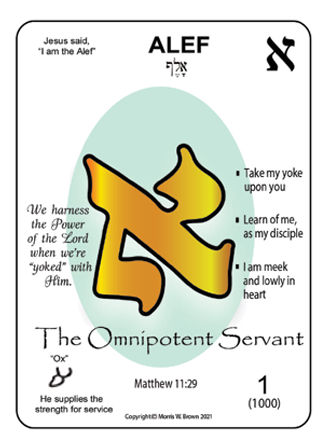BEDROCK 101 - INTRODUCTION
- Morris W. Brown

- May 1
- 3 min read
Updated: Jun 11

Bedrock 101 looks at the twenty-two letters of the Hebrew Alphabet by comparing the ancient paleo script and the modern script side by side. Reviewing the Alphabet is the first step in learning the meaning of each letter. The strange and wonder-filled Hebrew language is the vehicle that God used to communicate with us. Moreover, the very letters that he used to reveal his words were also a systematic graphical expression of his message to us.
Each letter carries a symbolic meaning that, in turn, is linked to the next letter. These twenty-two letters form a divine narrative that reinforces the message of the word. The letters can be seen as graphical objects themselves that visualize for us the concepts that the word presents. This helps us to understand by seeing the truths we believe. The ancient paleo script has a series of different variations in the shape and appearance of the design of the letters, from one time to the next. However, though they may appear in a slightly different way, the basic meaning that the letter signifies is the same. The same is true with the modern script. The embellishments of one particular font over another style is still, however, recognizable as the same letter.

The raw meaning of some of the letters is subject to some conjecture, but the rest of the letters are what they appear to be in their primitive drawing image. The kof, for example, is the drawing of the palm of a hand. The kof means the palm of the hand. When it comes to the interpretation of what any particular letters means is another matter. Again, looking at the letter, kof or palm, what meaning do we attach to the significance of the palm? Does it mean to halt? Or is it a gesture used to greet someone by raising the palm of the hand and saying, “How?” The symbolic meaning can suggest a whole range of notions. But the criteria of this work in determining the meaning of the letters is by looking at the overall message of the Bible, taking the obvious raw meaning of the letter, and overlaying the theological notion that Jesus is the word and the word was made flesh. So by looking at the letters through the lens that Jesus is the living word, we can make the determination that each letter relates to who Jesus is and what he does. Thus, regarding the kof, we apply the deeper meaning that Jesus extended his palms in sacrifice for us and, in so doing, he blesses us.

It may not seem clear at the start of our study as to how the letters symbolize the character and work of the Lord Jesus Christ, but once the evidence is presented, it will hopefully become more evident. And if you should gain an appreciation of the spiritual significance of the Hebrew Alphabet, it will be worth the effort. Hebrew-Aramaic Alphabet is, in its essence, a biographical overview of who Jesus is and what he does. This presentation of the Hebrew Alphabet is on several levels. The ancient form of the letters and the modern style both reveal insights and applications of the New Testament revelation of the Messiah.
Let's go straight to the next lesson: "The Aleph."
